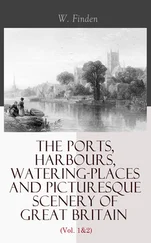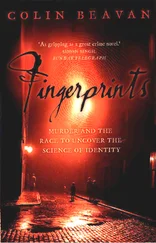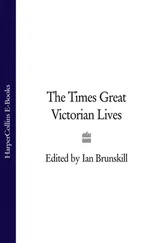Foley immediately set to concealing the discovery of the shift. He 'shuddered', he explained to the court, 'to think the man who found it was so foolish as to expose it'. He was sure that the stains were innocent, and that the shift had been hidden, in shame, by a servant. A medical man - Stapleton - had confirmed his own view that the stains had 'natural causes' (that is, they were marks of menstrual blood).
Saunders asked Foley: 'Did he [Stapleton] look at it with a microscope?'
Foley replied indignantly: 'No, I should think he did not!'
The Superintendent had then given the garment to PC Dallimore, who took it back to the Stallard Street police station.
In September Watts had run into Dallimore at the Road Hill cheese and cattle fair, and asked what had become of the shift. Dallimore told him that he had returned the 'shimmy' (an Anglicisation of 'chemise') to the kitchen on Monday, the day of the inquest. He planned to put it back in the boiler hole but was surprised by the cook entering the scullery, and so thrust it down the side of the boiler. Straight afterwards the nursemaid, just back from walking the two little girls, suggested he search the roof above the kitchen, and he did so - he had to clamber through a window overgrown with ivy. When he returned to the kitchen half an hour later the shift had vanished, presumably retrieved by its owner.
If the distinction between types of shift was bewildering territory for the police officers, so were the distinctions between types of blood. The ways of identifying menstrual blood and female underwear were hazy, all the more so when the items to be examined were whisked away so quickly. Much of the confusion about the underclothes and their stains was caused by embarrassment.
On the Thursday that the boiler-hole story came out, by strange chance, the private investigator Ignatius Pollaky arrived in Road to sit in on Saunders' proceedings. Pollaky, a Hungarian, was 'superintendent' of an inquiry office run by Charley Field, friend to Charles Dickens and Jack Whicher, who had retired from the Metropolitan Police in 1852. Private inquiry agents, as they were known, were a new breed, some of them retired detective officers such as Field. (Field briefly had his police pension withdrawn in the 1850s for improperly continuing to use his former title, Detective-Inspector, in his private practice.) The agents' main business was the sleazy stuff of the divorce court - divorce had been legalised in 1858, but proof of adultery was required if a man was to rid himself of his wife; a woman needed to prove cruelty to end a marriage.
'The mysterious Mr Pollaky', as The Times described him, at first refused to speak to Saunders or to the police. Over the weekend he was seen in Bath and Bradford. The next week he visited Frome, Westbury and Warminster, made a trip back to London (probably to report his findings and take further instructions) and then returned to Road. 'There is good reason for believing that his direct object is not the detection of the murderer,' said the Bristol Daily Post; rather, this paper's reporter gathered, the agent was there to keep an eye on Saunders. Other newspapers confirmed this: his job was to intimidate rather than to investigate. Perhaps Field sent Pollaky down to Road as a favour to Whicher, whose findings Saunders was tending to undermine. Pollaky took notes whenever Saunders made particularly eccentric statements, and he succeeded in unnerving the magistrate. The Frome Times reported that 'we were informed that Mr Saunders had an interview with that gentleman . . . and asked if it were true that his mission was to collect evidence for a lunatico inquirendo against him. We understand that Mr Pollaky declined to reply.' Now even the investigators of the Road Hill murder feared accusations of insanity. Saunders' inquiry was suspended on 15 November.
Inadvertently, Saunders had furthered Whicher's case. When a report about the bloody shift appeared in The Times, Whicher sent Sir Richard Mayne a memorandum drawing his attention to the news item. 'Seen,' Mayne wrote on the memo the next day.
There was a danger that the investigations into the murder were now doing more to conceal than to reveal the solution. 'The consciences of those who may be privy to the secret are not likely to have become more sensitive or their invention less fertile in the course of the numerous proceedings which have already taken place,' observed The Times. 'Every futile investigation is a gain to the guilty party; it shows him what gaps should be stopped and what contradictions avoided.' The writer worried about the lack of method in detective work - its reliance on imagination, intuition, guesswork - and yearned for a more dispassionate procedure: 'it is well known that detectives begin by assuming the guilt of some one, and then try how far their hypothesis will fit the circumstances. There is still room for the application of a more scientific process, and it may be that the facts, more calmly and impartially interrogated, will tell their own story.' The Saturday Review echoed this, calling for a 'more severe Baconian process' of deduction from empirical facts: rather than start with a theory, the detective should simply make 'a rigid, impartial, and unimpassioned registration of phenomena'. The perfect detective, it seemed, was not so much a scientist as a machine.
The persistent feeling against Samuel Kent, which underpinned Saunders' inquiry, was evident in a sixpenny pamphlet by the anonymous 'A Barrister-at-Law'. The author identified himself with the 'amateur detectives, keen-witted, forensic readers of the newspapers, local quidnuncs and sharp-eyed idlers', and listed fifteen questions about the behaviour of Samuel Kent on the day of the murder (for instance, 'Why did he order his carriage and seek a policeman at a distance, when one lived nearer?'), as well as nine about Elizabeth Gough ('Could she, from her own bed, have seen the child in the cot?') and one about Constance ('What became of the night-dress?').
Rowland Rodway, the Trowbridge solicitor, came to Samuel's defence, protesting in a letter to the Morning Post that 'the press, with few exceptions, seems to point at Mr Kent as the murderer of his child, and is gathering about him a storm of public indignation which has destroyed the social position of his family, and now threatens his own personal safety'. There was no chance now that Samuel would be granted the full inspectorship for which he had applied.
His colleagues had to conduct his factory inspections. 'It would be quite impossible for Kent at present to visit factories at Trowbridge,' wrote one of them, 'such is the feeling of the lower orders against him . . . Mr Stapleton . . . took a gentleman with him to Brown & Palmer's factory, who the people in the weaving shed mistook for Kent and an immediate yell was set up which continued until they were undeceived.' This inspector added that the hostility to Kent was most prevalent among the working classes: 'I do not think well informed and respectable people in Trowbridge think him guilty.' Another inspector wrote to the Home Secretary arguing that the ill-will against the 'most unjustly accused' Kent was so acute 'not only in his own neighbourhood, but everywhere else' that even a transfer would be useless. What was more, it was 'scarcely possible that Mr Kent will be able to leave home and be absent during the night for some time to come'. This line gives an indication of how the Kent family was passing that winter: in a state of such anxiety, perhaps even of mutual fear, that the father felt unable to leave them alone after dark. Cornewall Lewis scribbled his response on the envelope: 'I do not myself believe Kent to be guilty, but whether he is or not, he is too much an object of public suspicion to be able to perform his duties - could he be suspended for a time?' Two weeks later, on 24 November, Samuel was given six months' leave of absence.
Читать дальше












